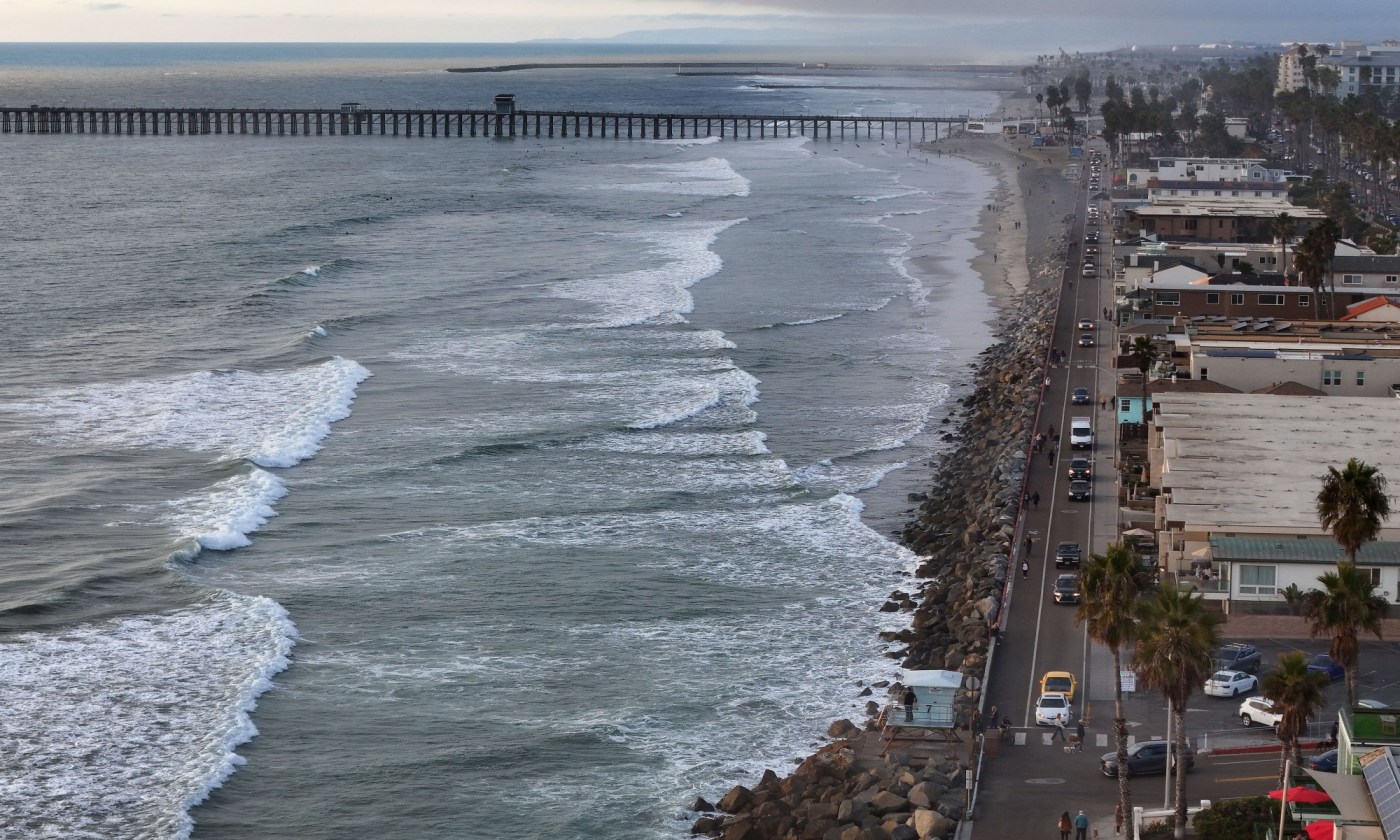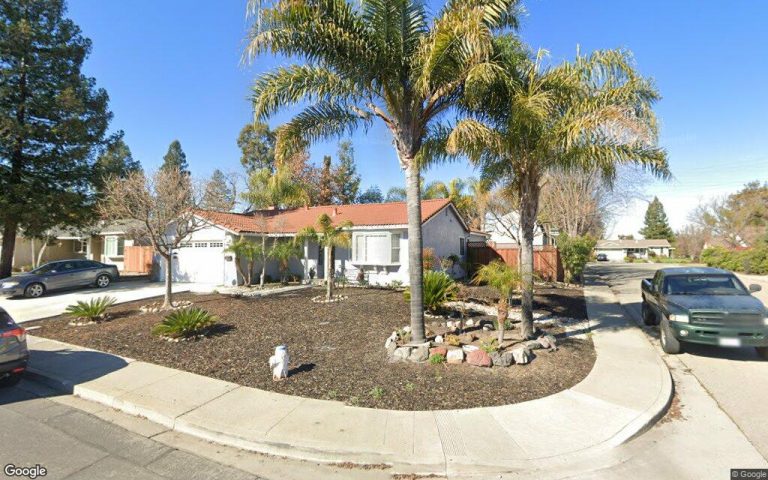Fluorescent-colored sand sprinkled on San Diego County beaches could help reveal the complicated patterns of erosion that plague the region’s coastline.
A so-called “tracer study” would use environmentally benign grains of bright material to show the movement of sand carried by ocean currents. The technique is recommended in a report recently completed by a “sediment management task force” for the county’s regional planning agency.
Recent studies by oceanographers at Scripps Institution of Oceanography and elsewhere take issue with the long-held belief that sediment migrates steadily from north to south in the water along the Pacific Coast.
“The ‘river of sand’ concept is over-simplistic,” said Keith Greer, deputy director of regional planning for the San Diego Regional Association of Governments.
Research over the last decade or more shows the patterns are far more complicated. Sediment movement varies by location, by season and from year to year. It swirls in “sub-cells” around jetties, into harbors and away from river mouths, the task force’s report states.
“We need more information about where sand stays longer,” said Greer, who participated in the year-long study by the task force for SANDAG’s Shoreline Preservation Working Group.
Scientists, engineers and others in the task force met five times beginning in June 2023 for presentations by Scripps Institution of Oceanography, the University of California, coastal lagoon managers and environmental consultants. Together, they compiled the latest information available on sediment within the Oceanside littoral cell, which extends from Dana Point in Orange County to La Jolla in San Diego.
“It was like taking a master class in oceanography,” Greer said.
Scientists, environmentalists and public agencies such as the California Coastal Commission see sand replenishment as the best hope for the region’s shrinking beaches.
The size of the grains of sand, the amount of sand deposited, and the frequency of sand replenishments are all factors in the effectiveness of beach nourishment projects, Greer said. Also, some sites seem to hold sand longer than others for reasons yet to be determined.
Tracer studies could reveal more about those factors, he said.
“The information would contribute to the design of beach nourishment programs, sand bypassing operations, and design and siting of sediment retention measures,” Greer said.
Related Articles
“Friendly” pod of orcas, CA51, make another appearance off California coast
December dolphin stampede off California coast ‘off the charts’
Court rules California Coastal Commission can limit construction of seawalls for thousands of property owners
California Coastal Commission names new chair
Homes vs. beaches: Court makes key decision in California seawall battle
The technology calls for placing natural or artificial material in a variety of bright colors on the beach or in shallow water to match the size and density of natural grains of sand. The unique colors and various sizes would enable scientists to track the effects of the ocean currents over months and even years.
Tracer studies have been used around the world to study coastal erosion.
The U.S. Army Corps of Engineers used the process from 2006 to 2009 to examine littoral sand transport at the mouth of the Columbia River in Washington. The results were used to determine the best places to deposit sediment dredged from the river’s navigation channel.
Oceanside’s harbor has long influenced sediment flow within the Oceanside littoral cell. The harbor, built in the 1960s, shares an entrance with the Camp Pendleton Boat Basin, built in the 1940s. Together, they stop much of the southbound sand and shrink Oceanside beaches.
The Corps of Engineers dredges the harbor mouth annually and deposits the sand on the city’s northernmost beaches. But there’s not enough of the material, and beaches south of the Oceanside pier are shrinking at an increasing rate.
The task force report also recommends that SANDAG “develop a regional consensus to install and monitor at least one pilot sand retention project.” Oceanside officials said Thursday they have just the spot for it.
Oceanside has spent more than two years and more than $3 million so far on its own sand replenishment and retention effort called the Re:Beach project. City officials asked SANDAG’s working group earlier this month to include it as the region’s pilot project.
The plan calls for pumping nearly a million cubic yards of sand from offshore deposits onto the beach, holding the sand there between two artificial headlands and building an artificial reef to protect it.
“The city has made a lot of progress,” said Jayme Timberlake, Oceanside’s coastal zone administrator.
Planning, design and engineering are well underway, and in November the city narrowed the possible location for the project to a few blocks south of Tyson Park.
If approved by the California Coastal Commission and other state, federal and local agencies, the city would have to find grants for between $30 million and $50 million to cover construction costs. Oceanside is optimistic that the project could be a model for other coastal cities to follow.
A recent preliminary economic analysis showed widening the beaches is well worth the multi-million-dollar investment, according to Phil King, a semi-retired professor of economics at San Francisco State University.
Tourism, property values and quality of life all are boosted by wider beaches, he said. Formulas for measuring the effects have been around since the 1950s.
“The benefits are much greater than the costs here,” King said in October. “You can justify this project very easily, even using fairly conservative assumptions.”
SANDAG has begun preliminary studies for what could be its third regional sand replenishment, which for the first time could include San Clemente and Dana Point in Orange County.
However, except for initial studies, that massive effort is unfunded and several years in the future. Also, as with the previous regional projects, so far there is no plan to include retention devices such as the artificial headlands and reef proposed in Oceanside.
“This is something that others can use in this fight that we all realize is so important,” said Oceanside City Councilmember Eric Joyce, a member of the SANDAG Shoreline Preservation Working Group.
A tracer study would help gather information, Joyce said, but a successful pilot project is more important and could provide solutions for the entire region.
Mitch Silverstein, policy manager for the Surfrider Foundation’s San Diego chapter, also supported the idea of selecting Oceanside for the pilot project.
“It is already on the ground, running,” Silverstein said. “It does make sense for that to be the pilot.”
Beaches across San Diego County’s coastline are shrinking for a number of reasons, as reviewed in the task force report.
About 50% of the sand that historically came from natural bluff erosion or flowed downstream in rivers has been lost, it states. Those losses are accelerating with the advent of sea-level rise and the increasingly fierce storms associated with climate change.
Also recommended in the task force’s report is for SANDAG to combine the information from the agency’s four shoreline policy documents into a single, updated document and make it available online through a public portal.
The task force’s recommendations will be included in SANDAG’s Shoreline Management Program for the upcoming fiscal year 2025-26.












